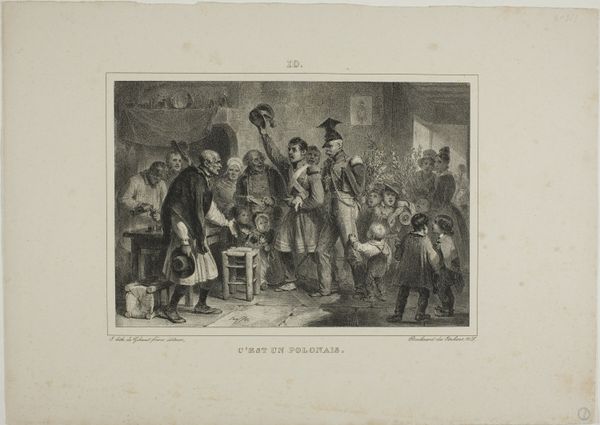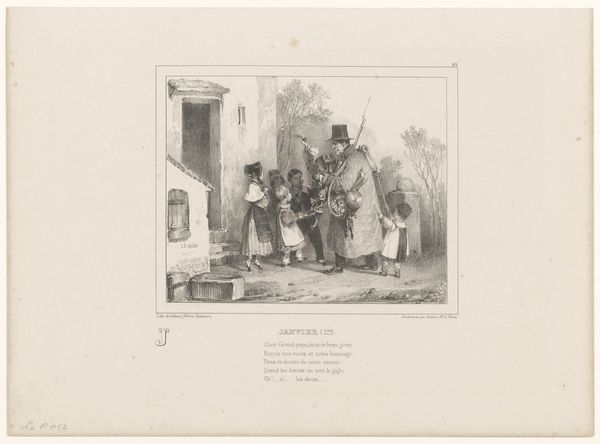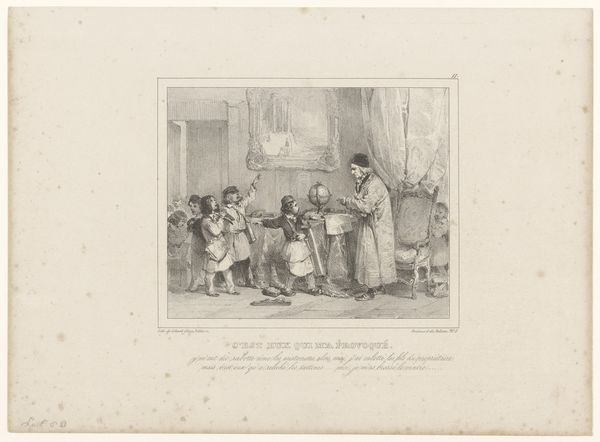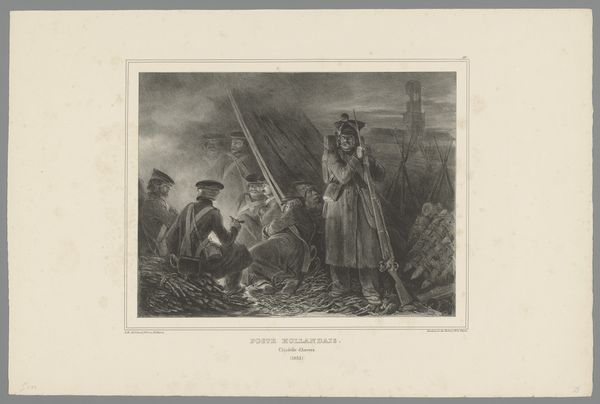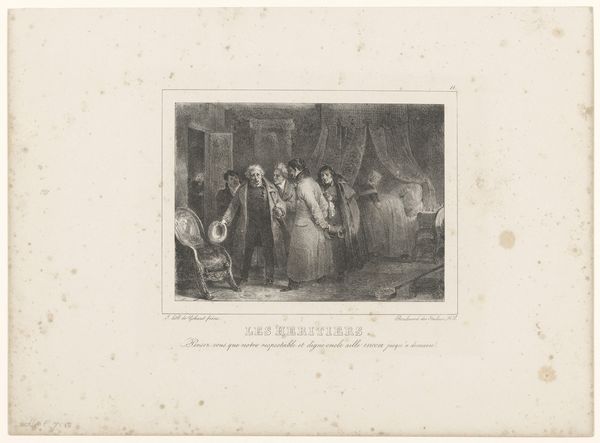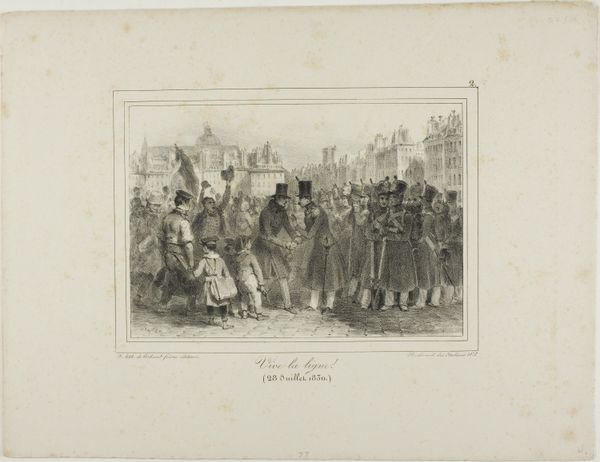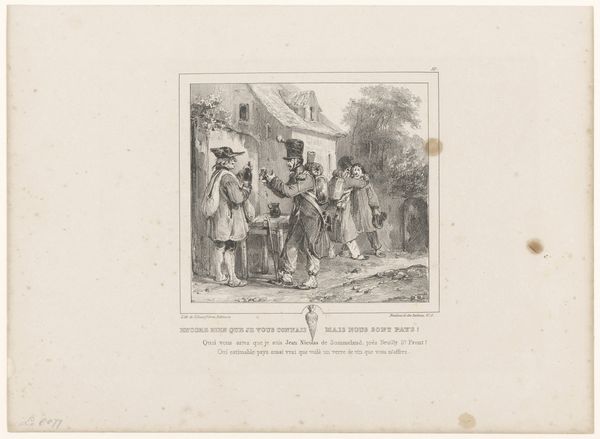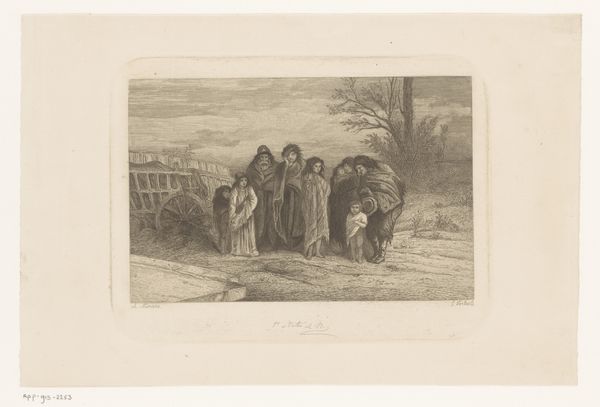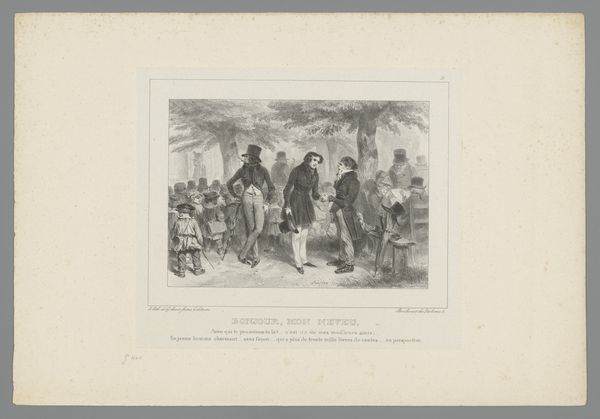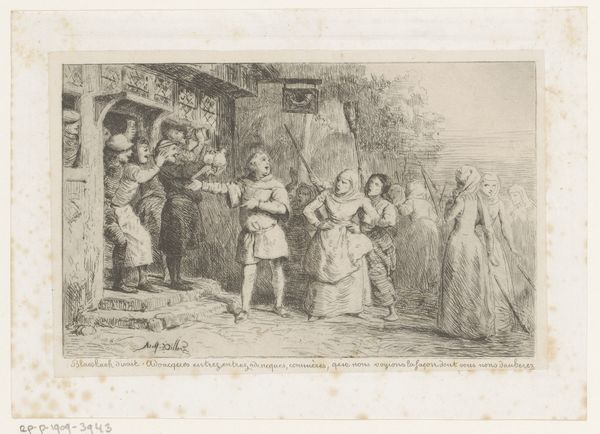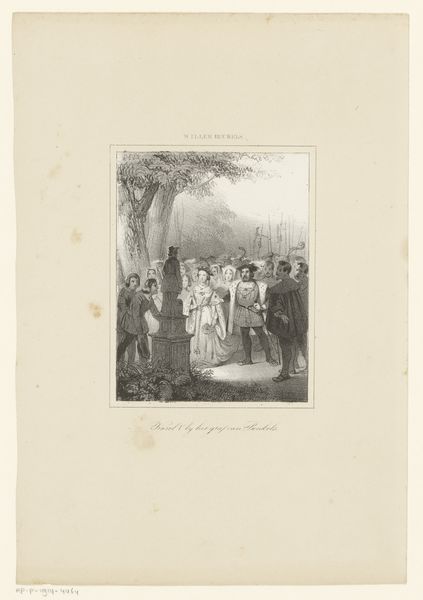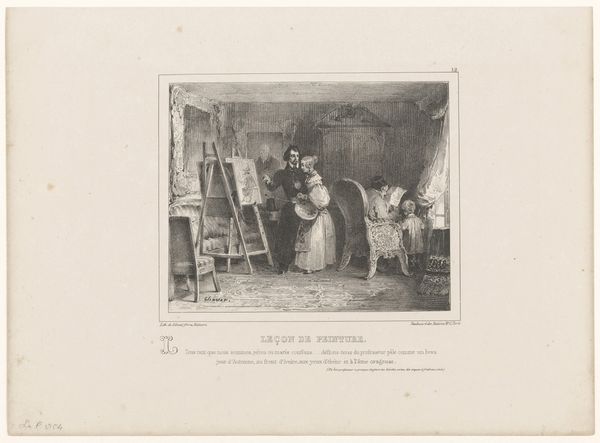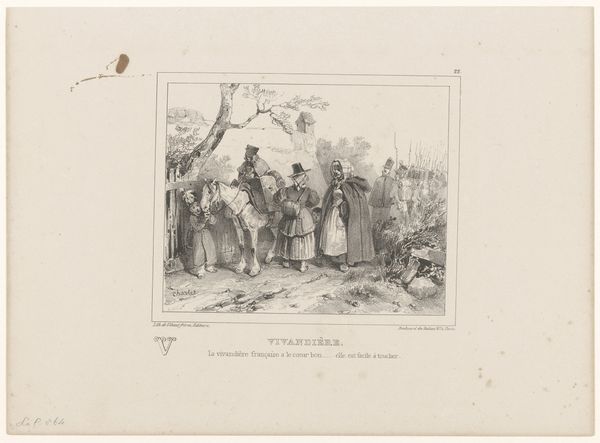
You who have made portraits of our fathers... would you make them of their children? 1827
0:00
0:00
drawing, lithograph, print, paper
#
portrait
#
drawing
#
lithograph
# print
#
figuration
#
paper
#
romanticism
#
genre-painting
Dimensions: 161 × 202 mm (image); 273 × 361 mm (sheet)
Copyright: Public Domain
This lithograph was made by Auguste Raffet, sometime in the first half of the 19th century. It depicts a printmaker at work in his studio, surrounded by the tools of his trade: inks, stones, and a printing press. The lithographic process is essentially a chemical one, based on the antipathy of grease and water. The artist draws an image on a stone or metal plate with a greasy crayon, then treats the surface so that ink only adheres to the drawn areas. This print is all about multiplication. It presents the artisan not as an inspired genius, but as a skilled worker producing images for a hungry public. The labor is collaborative, too. In the background, we see an assistant working on another printing stone. In front of them stands a crowd of eager children. They are not buying the prints themselves, but rather offering a promise of future patronage. Their presence hints at the democratizing power of printmaking and the rise of mass culture, tied to wider social issues of labor, politics, and consumption. This work reminds us to look closely at the intersection of art, craft, and industrial production. It challenges traditional notions of fine art as detached from the realities of labor and commerce.
Comments
No comments
Be the first to comment and join the conversation on the ultimate creative platform.
